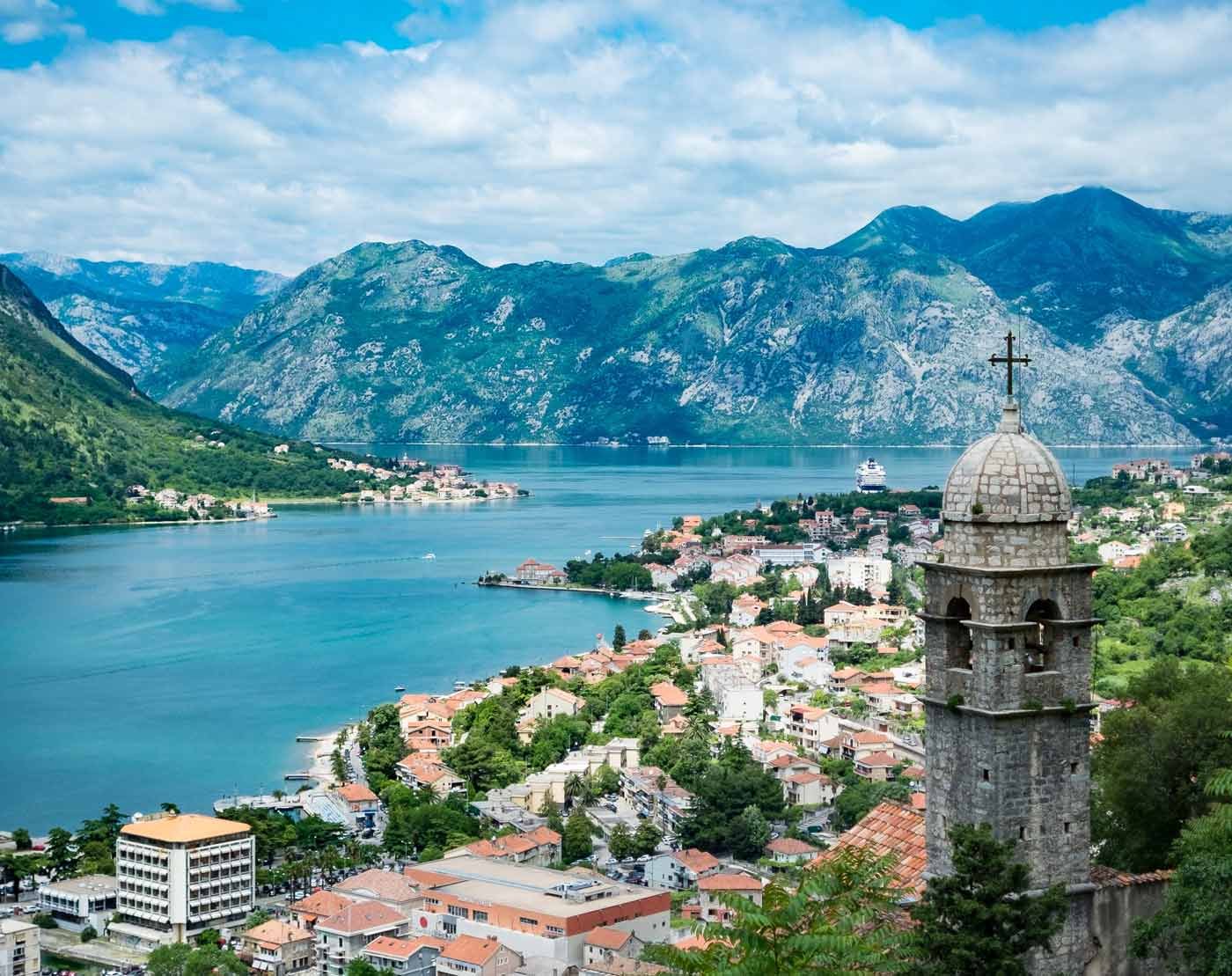Eastern Europe is a treasure trove of history, culture, and natural beauty, often overshadowed by its Western counterparts. While cities like Prague and Budapest draw millions, there’s a quieter, equally enchanting side to this region waiting to be explored. From medieval villages tucked into misty mountains to pristine lakes and vibrant local traditions, Eastern Europe’s hidden gems offer authentic experiences far from the tourist crowds. In this guide, I’ll take you on a journey through some of the region’s best-kept secrets, weaving in personal anecdotes, expert insights, and practical tips to inspire your 2025 travel plans. Whether you’re a history buff, a nature lover, or a seeker of unique cultural experiences, there’s something here for you.
Why Explore Eastern Europe’s Hidden Gems?
Eastern Europe is a region of contrasts, blending ancient traditions with modern vibrancy. While iconic destinations like Krakow’s Wawel Castle or Dubrovnik’s city walls are must-sees, the lesser-known spots offer a chance to connect with locals, savor untouched landscapes, and immerse yourself in stories that don’t make it into mainstream guidebooks. These destinations are often more budget-friendly, less crowded, and rich with authenticity—perfect for travelers craving meaningful experiences.
I remember stumbling upon a tiny village in Bosnia during a road trip. The cobblestone streets, lined with colorful houses, led to a waterfall that seemed to belong in a fairytale. There wasn’t a tour bus in sight, just locals sipping coffee and sharing stories. That’s the magic of Eastern Europe’s hidden gems: they feel like your own personal discovery.
Top Hidden Gems in Eastern Europe for 2025
Let’s dive into some of the most captivating, lesser-known destinations in Eastern Europe. Each spot offers a unique blend of history, nature, and culture, perfect for crafting an unforgettable itinerary.
Piran, Slovenia: The Adriatic’s Secret Coastal Gem
Tucked along Slovenia’s sliver of coastline, Piran is a postcard-perfect town that feels like a slice of Venice without the crowds. Its cobblestone alleys, pastel-colored buildings, and the sparkling Adriatic Sea create a romantic, laid-back vibe. Tartini Square, named after the famous violinist Giuseppe Tartini, is the heart of the town, where you can sip coffee while watching fishing boats bob in the harbor.
- What to Do: Climb the bell tower of St. George’s Church for panoramic views, wander the medieval walls, or relax at a seaside café. For adventure, take a boat trip to nearby salt pans or dive into the crystal-clear waters.
- Why It’s Special: Piran’s Venetian architecture and Slovenian hospitality create a unique cultural blend. It’s less touristy than nearby Dubrovnik, offering a peaceful escape.
- Pro Tip: Visit in late spring or early autumn to avoid peak summer crowds. Pair your trip with a visit to nearby Postojna Cave for a surreal underground adventure.
I visited Piran on a whim during a Slovenian road trip, and the sunset over the Adriatic, casting golden hues on the town’s orange rooftops, was a moment I’ll never forget. It’s the kind of place where you linger longer than planned.
Białowieża Forest, Poland/Belarus: Europe’s Last Primeval Woodland
Straddling the border of Poland and Belarus, Białowieża Forest is a UNESCO World Heritage Site and one of Europe’s last remaining primeval forests. This ancient woodland is home to the European bison, a majestic creature you can spot on guided tours. The forest’s untouched beauty feels like stepping into a time capsule, with towering trees and serene trails.
- What to Do: Join a guided wildlife tour to see bison, wolves, and rare birds. Explore the forest’s trails by bike or on foot, and visit the Białowieża National Park Museum for historical context.
- Why It’s Special: Its biodiversity and ancient ecosystem make it a haven for nature lovers. It’s a stark contrast to Poland’s bustling cities like Warsaw.
- Pro Tip: Book a guided tour in advance, as parts of the forest are protected and require permits. Stay in the nearby village of Białowieża for cozy guesthouses and local cuisine.
Walking through Białowieża, I felt a profound connection to nature. The silence, broken only by rustling leaves and distant bird calls, was a reminder of how rare such untouched places are.
Perast, Montenegro: A Baroque Beauty on the Bay of Kotor
Perast, a tiny village along Montenegro’s Bay of Kotor, is a hidden gem with fewer than 300 residents. Its Baroque architecture, historic churches, and two picturesque islets—Our Lady of the Rocks and St. George—make it a photographer’s dream. The town’s waterfront, lined with stone palaces, exudes old-world charm.
- What to Do: Take a boat to Our Lady of the Rocks, explore St. Nikola Church, or hike to the hilltop fortress for stunning bay views. Enjoy fresh seafood at a waterfront restaurant.
- Why It’s Special: Perast offers a quieter alternative to Kotor’s bustling old town, with a rich maritime history and breathtaking scenery.
- Pro Tip: Visit in May or September for pleasant weather and fewer visitors. Combine with a day trip to Kotor’s old town for a perfect blend of hidden and popular.
My boat ride to Our Lady of the Rocks was magical—the islet’s tiny church, built by sailors, felt like a secret shared by the sea. Perast is a place to slow down and savor.
Theth National Park, Albania: A Hiker’s Paradise
Nestled in the Albanian Alps, Theth National Park is a rugged, unspoiled paradise for outdoor enthusiasts. Towering peaks, crystal-clear rivers, and traditional stone houses create a dramatic landscape. The village of Theth, with its welcoming guesthouses, is a gateway to some of Europe’s best hiking trails.
- What to Do: Hike to the Grunas Waterfall or the Blue Eye of Theth, a turquoise spring. Visit the historic Theth Church and stay in a local guesthouse for authentic Albanian hospitality.
- Why It’s Special: Theth’s remote location keeps it off the tourist radar, offering pristine nature and a glimpse into Albania’s traditional mountain culture.
- Pro Tip: Pack sturdy hiking boots and visit in summer for optimal trail conditions. Be prepared for limited connectivity—this is a place to disconnect.
Hiking in Theth, I was struck by the raw beauty of the mountains and the warmth of the locals, who invited me for homemade raki after a long day on the trails.
Český Krumlov, Czech Republic: A Fairytale Town
Český Krumlov, a UNESCO World Heritage Site in the Czech Republic, is a medieval town that feels like it’s frozen in time. Its winding streets, Renaissance castle, and the Vltava River create a fairytale atmosphere. Unlike Prague, it’s less crowded but equally enchanting.
- What to Do: Tour the Český Krumlov Castle, stroll the cobblestone streets, or kayak on the Vltava. Don’t miss the Egon Schiele Art Centrum for a dose of modern art.
- Why It’s Special: The town’s compact size and well-preserved architecture make it a perfect day trip or weekend escape.
- Pro Tip: Visit in autumn for vibrant foliage and fewer tourists. Stay in a historic guesthouse for an immersive experience.
I wandered Český Krumlov’s streets at dusk, with the castle lit up against the starry sky. It felt like stepping into a storybook, far from the hustle of Prague.
Comparison Table: Eastern Europe’s Hidden Gems at a Glance
| Destination | Country | Best For | Key Attraction | Best Time to Visit | Accessibility |
|---|---|---|---|---|---|
| Piran | Slovenia | Coastal charm, history | Tartini Square, St. George’s Church | May, September | Easy (near Ljubljana) |
| Białowieża Forest | Poland/Belarus | Nature, wildlife | European bison, primeval forest | Summer | Moderate (rural) |
| Perast | Montenegro | Scenic beauty, maritime history | Our Lady of the Rocks | May, September | Easy (near Kotor) |
| Theth National Park | Albania | Hiking, adventure | Grunas Waterfall, Blue Eye | Summer | Challenging (remote) |
| Český Krumlov | Czech Republic | Medieval history, architecture | Český Krumlov Castle | Autumn | Easy (near Prague) |
Why This Matters: This table helps you compare destinations based on your interests, travel style, and accessibility. For example, Piran and Perast are ideal for relaxed coastal trips, while Theth is better suited for adventure seekers.
Planning Your Trip: Practical Tips for Exploring Hidden Gems
Traveling to Eastern Europe’s lesser-known destinations requires a bit of planning, but the rewards are worth it. Here’s how to make the most of your adventure:
- Research and Timing: Use resources like Lonely Planet to find off-the-beaten-path itineraries. Visit in shoulder seasons (spring or autumn) to avoid crowds and enjoy pleasant weather.
- Transportation: Many hidden gems are rural, so consider renting a car for flexibility. For budget travelers, regional buses and trains are affordable—check FlixBus for routes.
- Accommodation: Opt for local guesthouses or boutique hotels for an authentic experience. Platforms like Booking.com offer great options in smaller towns.
- Cultural Etiquette: Learn a few local phrases and respect traditions. In Albania, for example, accepting a coffee or raki is a sign of hospitality.
- Safety: Hidden gems are generally safe, but check travel advisories on government travel websites before visiting remote areas.
During my travels, I learned that flexibility is key. A delayed bus in Montenegro led me to a roadside café where I tried the best burek of my life—a flaky pastry filled with cheese and spinach. Sometimes, the detours lead to the best discoveries.
Cultural and Culinary Highlights: What to Expect
Eastern Europe’s hidden gems are rich with local traditions and flavors. Here’s a taste of what you’ll find:
- Slovenia (Piran): Savor seafood dishes like branzino (sea bass) and štruklji (dumplings). Attend a local wine festival to taste Malvasia wines.
- Poland/Belarus (Białowieża): Try pierogi (dumplings) with wild mushroom fillings and żubrówka, a bison grass vodka.
- Montenegro (Perast): Enjoy crni rižoto (black risotto) made with squid ink and fresh Adriatic fish.
- Albania (Theth): Sample byrek (savory pastry) and fergesë (a cheesy vegetable bake). Pair with homemade raki.
- Czech Republic (Český Krumlov): Indulge in svíčková (marinated beef with cream sauce) and local beers like Budvar.
Exploring local markets is a great way to dive into the culture. In Piran, I haggled for fresh figs and homemade olive oil, chatting with vendors who shared stories of their coastal life.
FAQ: Your Questions About Eastern Europe’s Hidden Gems Answered
Q: Are these destinations safe for solo travelers?
A: Yes, most hidden gems in Eastern Europe are safe, with low crime rates in rural areas. Exercise standard precautions, like avoiding isolated areas at night and securing valuables. Check local travel advisories for updates.
Q: How budget-friendly are these places?
A: Eastern Europe is generally more affordable than Western Europe. Meals in local restaurants can cost $5–$15, and guesthouses range from $20–$50 per night. Public transport and local tours are also budget-friendly.
Q: Do I need to speak the local language?
A: While English is spoken in tourist areas, learning basic phrases (hello, thank you) enhances your experience. In remote areas like Theth, a translation app like Google Translate can be handy.
Q: What’s the best way to get to these destinations?
A: Major cities like Ljubljana, Warsaw, or Podgorica are gateways. From there, rent a car or use regional buses. For Theth, consider a guided tour due to its remote location.
Q: When is the best time to visit?
A: Spring (April–June) and autumn (September–October) offer mild weather and fewer crowds. Summer is ideal for hiking in Theth or beach time in Piran, while autumn brings vibrant colors to Český Krumlov.
Q: Are these destinations family-friendly?
A: Absolutely! Piran and Český Krumlov offer gentle walks and cultural sites suitable for kids. Theth may be challenging for young children due to rugged terrain, but Białowieża has family-friendly trails.
Conclusion: Crafting Your Eastern European Adventure
Eastern Europe’s hidden gems are more than just destinations—they’re invitations to slow down, connect with locals, and uncover stories that linger long after you’ve returned home. From the serene shores of Piran to the wild trails of Theth, these places offer a chance to escape the crowds and experience the region’s soul. My own travels through these lesser-known corners taught me that the best moments often come unexpectedly—a shared meal with a local family, a quiet sunset over a medieval town, or the thrill of spotting a bison in an ancient forest.
As you plan your 2025 adventure, start with one or two of these gems and build an itinerary that blends exploration with relaxation. Use resources like Rough Guides for detailed itineraries or connect with local tourism boards for insider tips. Whether you’re kayaking in Montenegro or wandering Český Krumlov’s cobblestone streets, you’ll find that Eastern Europe’s hidden treasures are waiting to steal your heart.
So, pack your bags, embrace the unknown, and let Eastern Europe surprise you. Where will your journey begin?








